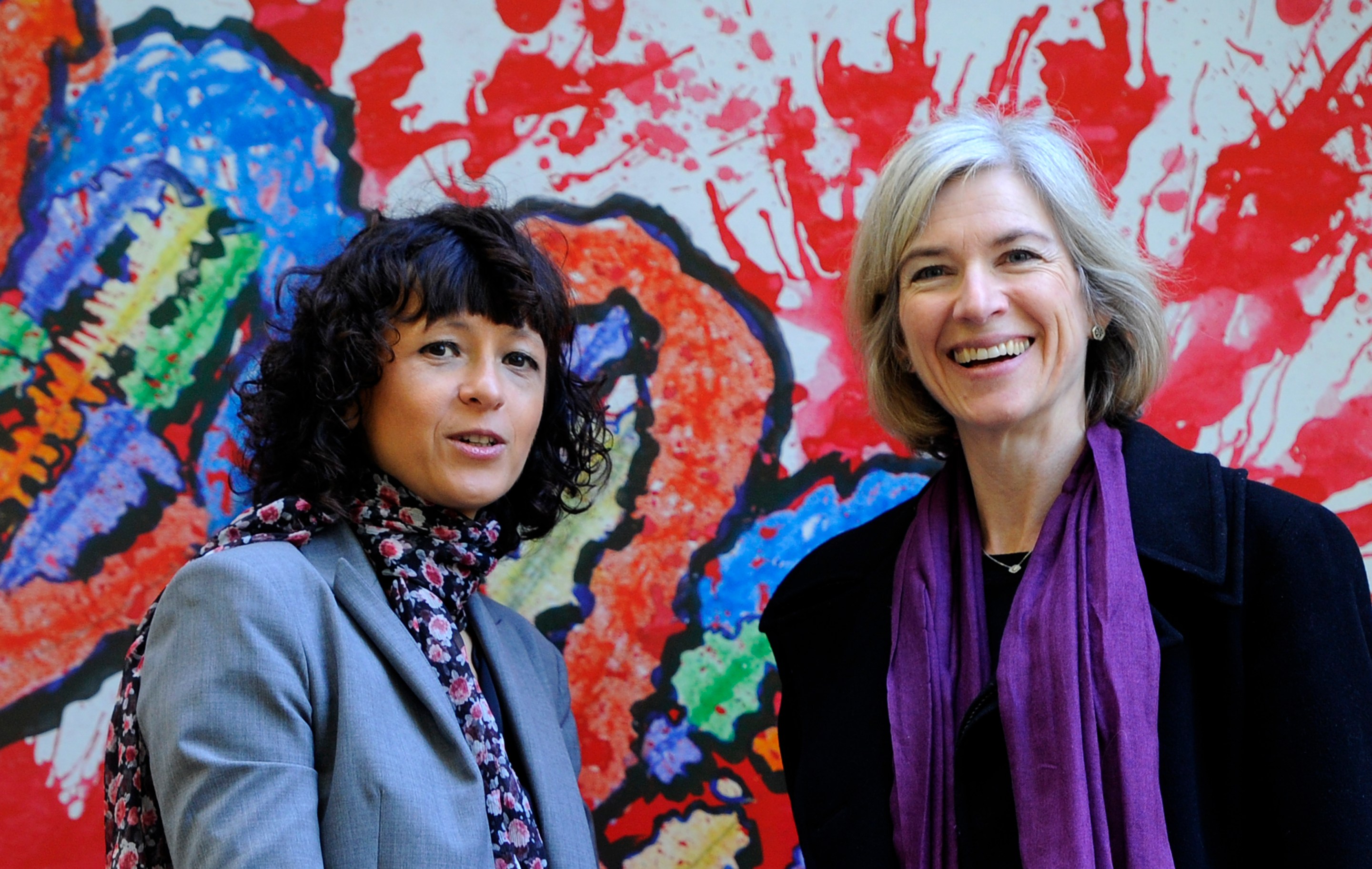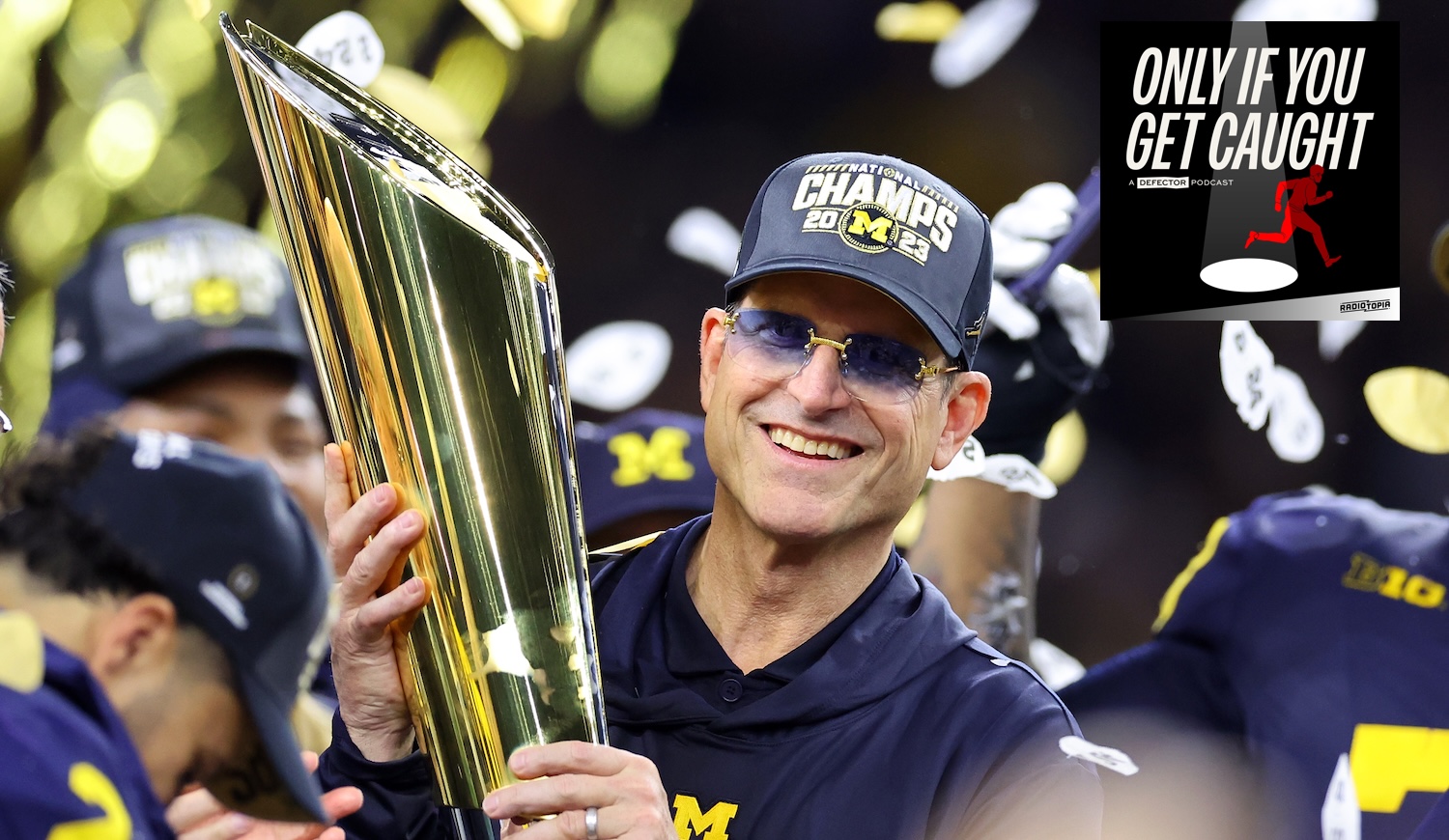On Wednesday, scientists Emmanuelle Charpentier and Jennifer Doudna won the Nobel Prize in Chemistry for “the development of a method for genome editing.” This marks the first time the award was given to a team of all women, and the news was publicized as a capital-I Important moment of recognition for women in the natural sciences. Celebrate Charpentier’s and Doudna’s win as something else, too: a high-profile reminder of the value of “basic” science, which unlike applied science dwells on fundamental questions of how and why. Theirs was inquiry for inquiry’s sake, begun with no purpose or end in mind beyond a deeper understanding of life on Earth. How funny, then, that it put the two at the center of a mini-drama involving the politics of patents, self-serving distortions of narrative, and the mystifying world of academic journals. All in all, a truly magnificent controversy I am now obsessed with.
Charpentier, a French biochemist and microbiologist now based in Berlin, met Doudna, a biochemist at UC-Berkeley, at a conference in Puerto Rico in 2011. At a cafe, they chatted about their interest in a phenomenon of bacteria, in which scientists had noticed odd, repeating DNA sequences interspaced with unique sequences. (These were named "clustered regularly interspaced short palindromic repeats," or CRISPR.) CRISPR represented a kind of bacterial immune system. If bacteria survived a viral attack, it copied DNA sequences from the attacking virus and stored them, as a sort of wanted poster to identify viral threats in the future. If the virus returned, the bacteria deployed a protein called Cas9 to slice the virus's DNA at the site matching the bacteria's stored copy, killing the virus. New collaborators, Charpentier and Doudna discovered a means of programming Cas9's wanted poster to precisely and efficiently find and cut any desired sequence of DNA. In a heralded 2012 Science paper, they wrote of this technology's "considerable potential for gene targeting and genome editing applications."
As with many complex scientific discoveries, this one may best be relayed in metaphor. Charpentier has called the CRISPR-Cas9 system a Swiss Army knife, a tool capable of cuts, insertions and changes to genetic code. In a 2019 documentary about CRISPR, molecular biologist Feng Zhang of the Broad Institute invoked a word processor; a cursor homes in on spots of the genome’s text that may then be deleted or pasted over. The press release from the Royal Swedish Academy of Sciences, which awards the chemistry Nobel, features the more analog description “genetic scissors.”
For their win, Charpentier and Doudna received the scientific community’s plaudits, though one comment of note came from a geneticist named Eric Lander, who heads the insanely well-endowed Broad Institute, a rare crosstown genomics research partnership between Harvard and MIT. Lander’s tweet reads innocuously—he congratulated the women for their “contributions to the amazing science of CRISPR”—but a true CRISPR War buff will read between the lines.
Lander notably does not credit them with any kind of discovery, but with "contributions." In 2015, he wrote an infamous article called "The Heroes of CRISPR" in the journal Cell, which detailed the history of CRISPR research, or at least the history according to Lander. The article mentions the contributions of Doudna, Charpentier and others often enough to merit the plural, but in Lander’s telling one scientist comes off as the real hero: Zhang, Lander's Broad Institute colleague. Where Charpentier and Doudna developed the technology to edit genetic makeup in a test tube, Zhang showed it could be done in mammalian cells, a development with profound practical implications for the fields of medicine and biotechnology. Lander implied in the article that Zhang's work is the more consequential.
Lander's paper disclosed no conflict of interest, though an obvious one existed. It appeared to be gross, brazen politicking; selective history read by the right people would improve Zhang's chances at the Nobel and the Broad Institute's chances of winning CRISPR-Cas9 patents, where potentially billions of dollars are now at stake. The article also re-opened one old wound of scientific research, that women's contributions are often diminished or written out.
But gender is only one political variable at play in the CRISPR credit controversy. One feels, for example, for Lithuanian researcher Virginijus Siksnys, who made a nearly identical discovery independently but whose publication was inexplicably rejected by Cell without review, a few months before Charpentier's and Doudna's paper was published in Science. Doudna, already well-established in her field, had her findings fast-tracked by Science and accepted in two weeks. Only afterward did Siksnys, employed at a lesser-known university, manage to place his.
Science is an iterative, collaborative, coincidence-prone discipline and always has been. For that reason, the rules of the Nobel Prize as stipulated in Alfred Nobel's will are not so much antiquated as bizarre. The prizes each can be shared by up to three recipients, all of whom must be living. Nobel's will calls for the chemistry prize to be awarded "to the person who shall have made the most important chemical discovery or improvement." How do you even define that?
That this year’s Nobel Committee waded into the ongoing CRISPR fight so soon is a little surprising. Though an eventual CRISPR-related win had been a sure bet for a few years, Nobel Prizes are often awarded decades after publication of an initial discovery. In fact, those delays can simplify the Committee's work. They leave the task of sorting out who should get credit for what to time, and more grimly, they might ensure that only three or fewer parties to the discovery are still alive.
It was undeniably a more dramatic choice to award the prize to two recipients, despite the presence of a potential third. The Committee surely deliberated the matter of credit and the award language is appropriately contoured (“a method for genome editing”) to reward the basic science rather than Zhang's translational work, in what must be a blow to Broad's pride. Zhang’s co-author George Church, whose striking beard and eccentric wish to repopulate the Arctic tundra with lab-grown woolly mammoths have made him something of a celebrity geneticist, says Charpentier's and Doudna's Nobel win was a choice that makes sense in light of the Committee's preference for discoveries over inventions. He's right, and Wednesday's news still leaves open the door for Zhang to someday win the Prize in Medicine.
In purely financial terms, anyway, the Nobel may effectively be a consolation prize for Charpentier and Doudna. Zhang and the Broad Institute are currently winning the patent wars. Berkeley filed a patent application months before Broad did, but in an on-the-nose exercise of institutional might, the Broad Institute filed a dozen patents and paid the U.S. Patent and Trademark Office to have them fast-tracked. Charpentier and Doudna and Zhang have now been involved in a protracted patent war for years, each side having spent millions in legal fees.
I haven't even mentioned the much more visible and irresolvable CRISPR controversy. The concern far outpaces the science, but any active mind will wander to the prospect of programming children to be brilliant or star athletes or blonde or to never feel pain. In magazine headlines, CRISPR is sometimes linked with the frightening trope of "designer babies." Already, CRISPR is being used to treat patients with sickle cell disease, though these are edits to adult cells; edits to the germ line, or the sex cells in which genetic mutations can be passed to offspring, remain off-limits and far more controversial. Amid praise for CRISPR as a potential cure for inherited diseases, the disability rights community has expressed proper concern over which traits the genetic scissors will be applied to.
Compared to the question of who this science will serve and how, the fight between institutions may seem entirely superficial. But who wins the patents and who wins the prizes do determine, however unfairly, who drives the public conversation and who establishes the terms for applied use. The politics and the greater bioethics are intertwined. Doudna, for her part, often recounts a nightmare she once had in which she explains her research to a shadowy figure who turns out to be Adolf Hitler. She told The New Yorker it "has haunted me from that day. Because suppose somebody like Hitler had access to this—we can only imagine the kind of horrible uses he could put it to." She and Charpentier have called for a moratorium on germ line edits, as has Zhang. (In recognizing the hazards of their work, they are more humble than Alfred Nobel, who believed his invention, dynamite, would inspire so much fear in would-be warmongers as to ensure eternal world peace.)
And there is another less-mainstream but deeply important question of public interest here: The CRISPR wars embody a trend toward "Big Science," in which the fruits of taxpayer-funded research are patented and leveraged to lucrative ends. With an exclusive license from Broad, the Broad private spin-off Editas Medical signed one deal worth $737 million. Who does this science serve? The public good or private wealth? Charpentier's and Doudna's noble inquiry into the smallest mechanisms of life may tell you as much about the natural world as it does about modern science's broken systems.






